Open This Publication
Abstract in English:
Purpose
The purpose of this paper is to nuance the idea of natural access proposed by Mats Alvesson in his description of at-home ethnography, and to offer a performative view of Alvesson’s suggestion that, in at-home ethnography, the ethnographer must work with “the processual nature of the researcher’s self.”
Design/methodology/approach
The author offers a reflection on the several years of ethnographic research the author conducted, of which some parts were done in a living community of which the author was part. Being literally at home, as well as being very familiar in the other research settings the author describes, allows for a critical reflection on what “at-homeness” means.
Findings
Using Butler’s notion of performativity, the author argues that “the processual nature of the researcher’s self” Alvesson speaks of, can best be understood as multiple selves, of which some emerge during the research process. The author furthermore problematizes Alvesson’s use of the term “natural access,” by arguing that this kind of access is neither easy, nor devoid of power relations.
Originality/value
This paper uses an experience of conducting research in the home, as well as an experience conducting research in a setting where the researcher arguably blent in well, to question what the “at-home” in at-home ethnography means, and how the researcher can deal with it.
Journal Journal of Organizational Ethnography
Publication Year 2018
Volume 7 (2)
DOI https://doi.org/10.1108/JOE-12-2017-0068
English | Discipline Social Science
